Ford, Mazda, Volvo all seem to get along
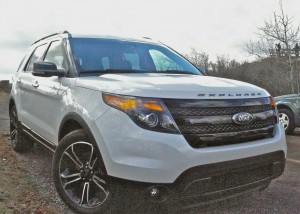
Ford, Mazda and Volvo were closely aligned affiliates for years, but all are doing well on their own.
By John Gilbert
When Ford Motor Company owned Volvo and had a solid percentage of Mazda a decade ago, all three seemed to be thriving, as Ford used those two affiliates in a tight network of platforms and engines that led to some excellent vehicles.
When Ford first brought out the Probe sports coupe, it had a 4-cylinder Mazda engine and a V6 from Ford, and Mazda actually built the car for Ford in Flat Rock, Mich. Later, Ford saw that Mazda was building the Tribute compact SUV, which was exactly what Ford was visualizing, so they collaborated and Ford built both the Tribute for Mazda and the Escape for itself. Mazda supplied Ford with an exceptional 2.0-liter 4-cylinder engine that has evolved into the Ford engine now being turbocharged as the EcoBoost. Ford also brought in the rock-solid Volvo platform to underpin the Edge and the Taurus, and used the same technology for the new Explorer. The very successful European Focus was another example of the global treatment, as Ford equipped its prize compact with the 2.0-liter Mazda engine, and built it on a Volvo S40 platform.
When the economy sputtered, Ford protected its bottom line by divesting itself of its connection to Mazda and ownership of Volvo, and all three went their separate ways. All three continue to build impressive vehicles independently. Ford is doing the best its ever done, making major headlines with its EcoBoost powerplants. Mazda has continued to make breakthrough engines with its new Skyactiv technology. And Volvo has improved its breed, agreeing to be bought by a Chinese holding company that owns Geely, a Chinese car company. All Volvo needs to continue building strong, safe vehicles is financial support, and the Chinese ownership can provide that.
That makes it interesting to take a look at what the three are doing in the midsize SUV market segment, where they used to collaborate.
FORD EXPLORER
The Explorer is generally credited with igniting the move down from the largest SUVs to more maneuverable and more efficient midsize vehicles. Since then, Ford has squeezed the Edge, Flex, and Escape in under the Explorer, so the latest Explorer is larger, as if to bridge the gap from midsize to large.
The Explorer benefits from the EcoBoost plan of using smaller-displacement engines, turbocharg them to reclaim the power of larger alternatives. The enlarged Explorer can range from a 2.0 EcoBoost four, to a 3.5 V6 with 290 horsepower, and all-new for 2013 is the Explorer Sport, a specialty SUV with blacked out grille and lower front fascia, and the 3.5-liter EcoBoost V6.
The Sport 2.0 engine, with twin turbocharging, delivers 350 horsepower and 350 foot-pounds of torque, increasing towing capacity to 5,000 pounds. A 6-speed automatic transmission with steering wheel paddles is well coordinated with Ford’s terrain management system, which seems to be a thinly disguised copy of the system used by Range Rover — another marquee Ford owned but recently sold. Settings for smooth pavement, foul weather, and even off-road terrain are available at the twist of a console knob. The Sport package also has a stiffer suspension with specially tuned steering, and unique 20-inch wheels.
Leather seats are just among the luxury touches on the option list of the new Explorer, and in the elongated new vehicle, a third-row, fold-down jump seat fits into the rear. Hill-descent and hill-start assist are both options that are included standard on the Sport upgrade, along with trailer sway control. Ford’s Sync and MyFordTouch connectivity systems are also standard on the Sport, and a Sony 390-watt, 12-speaker audio can fill the otherwise sound-deadened interior with sound.
Explorer prices start at $30,000 for the front-wheel-drive base model, and move up according to choices. Fuel economy is an issue, because the EcoBoost 4 might get up to 28 miles per gallon if you don’t keep stomping on the gas pedal, while the larger V6 EcoBoost is more likely in the 23 mpg range. The Sport lists for $40,720, although when you add options such as voice-activated navigation, power liftgate, push-button start with remote, and trailer towing package, you can easily see the sticker rise to the Sport test vehicle’s $46,740.
MAZDA CX-9
When Mazda introduced the CX-9, its largest SUV, it won North American Truck of the Year honors for its styling, roominess and efficient operation. The newest CX-9 has been restyled to share the newest corporate nose, which is taken from recent Mazda concept show cars and resembles the CX-5 front, which stretches over to cover the new Mazda6 sedan as well.
The larger under-hood area will house Mazda’s elaborate exhaust manifold on the Skyactiv design, but the vehicle we tested for a week is the 3.7-liter V6 originally designed by Ford but modified significantly by Mazda, with dual overhead camshafts and variable valve-timing to produce 273 horsepower and 270 foot-pounds of torque. A 6-speed Aisin transmission shifts powerfully but smoothly.
Performance is always a mainstay of Mazda vehicles, and the CX-9 is no different. Active torque-split all-wheel drive and 20-inch alloy wheels aid cornering, but the best features of the CX-9 are inside, where the styling is simple and straightforward, but can accommodate all sorts of people — seven — and/or luggage. A neat feature of the CX-9 is that is has extra wide rear doors, which not only make it easy to climb into the second row seats, but also make it easier to access the third row. The second row slides forward at the touch of a button, making climbing into the rear easy — especially for kids.
The CX-9 can climb to the mid-20s in mpg on the highway, but may struggle to stay above 20 in city driving. The test vehicle was the Touring model with AWD, and it has a base price of $36,375. Significant options include a Bose audio system with 10 speakers, a full color touchscreen for navigation and other controls, and a power moonroof. That runs the sticker up to $39,755.
VOLVO XC60 T6
Volvo had great success augmenting its various sedans with the XC90 SUV, which had all the safety assets of Volvo sedans and adds the over-engineered ruggedness of a true off-roading vehicle. The XC60 is a junior-sized version of the XC90, and it makes good use of its lighter and more agile frame and shape.
Base engine in the XC60 is a fully adequate 3.2-liter inline 6 with 240 horsepower and 236 foot-pounds of torque, but the test vehicle came with Volvo’s potent 3.0-liter turbocharged inline 6, and it develkops 300 horsepower at 5,600 RPMs and 325 foot-pounds of torque that peaks at a mere 2,100 RPMs and runs up at a plateau until it meets the horsepower peak.
A 6-speed Geartronic transmission has sport mode and its all-wheel drive has instant traction. It’s always impressive to see that Volvo can stick to its greatest strength, which is safety, featuring unibody high-strength steel passenger safety cage, plus dynamic stability traction-control, roll stability control, and excellent brakes, and then inject a whole lot of high-performance features. All the time, the XC60 provides excellent support from its seats, and all the luxury touches you might want, from 8-way power leather seating, panoramic sunroof, 7-inch color monitor screen, rear park assist, premium audio, power tailgate, heated seats and heated windshield washer nozzles.
Base price of $40,450 includes complimentary scheduled maintenance for three years or 36,000 miles, and adding the Platinum package boosts the sticker to $48,145. Fuel economy ranges up to mid-20s on the highway, which makes it about the same as the Explorer or CX-9, and while it doesn’t have the third-row seat of the Ford or Mazda, the solid feel of the Volvo’s structure is unexcelled.
Comments
Tell me what you're thinking...
and oh, if you want a pic to show with your comment, go get a gravatar!


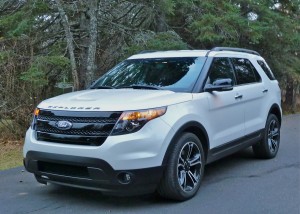
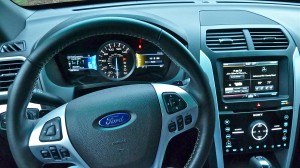
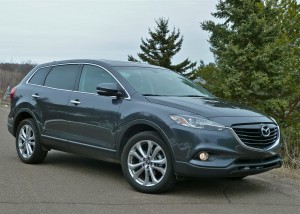
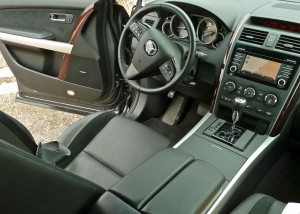
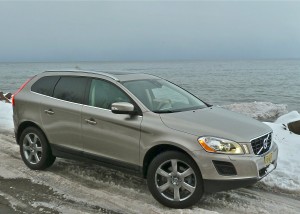
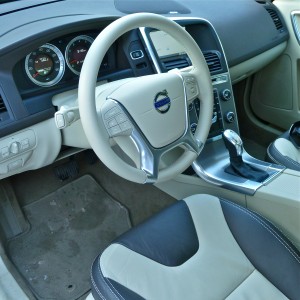
 John Gilbert is a lifetime Minnesotan and career journalist, specializing in cars and sports during and since spending 30 years at the Minneapolis Tribune, now the Star Tribune. More recently, he has continued translating the high-tech world of autos and sharing his passionate insights as a freelance writer/photographer/broadcaster. A member of the prestigious North American Car and Truck of the Year jury since 1993. John can be heard Monday-Friday from 9-11am on 610 KDAL(www.kdal610.com) on the "John Gilbert Show," and writes a column in the Duluth Reader.
John Gilbert is a lifetime Minnesotan and career journalist, specializing in cars and sports during and since spending 30 years at the Minneapolis Tribune, now the Star Tribune. More recently, he has continued translating the high-tech world of autos and sharing his passionate insights as a freelance writer/photographer/broadcaster. A member of the prestigious North American Car and Truck of the Year jury since 1993. John can be heard Monday-Friday from 9-11am on 610 KDAL(www.kdal610.com) on the "John Gilbert Show," and writes a column in the Duluth Reader.